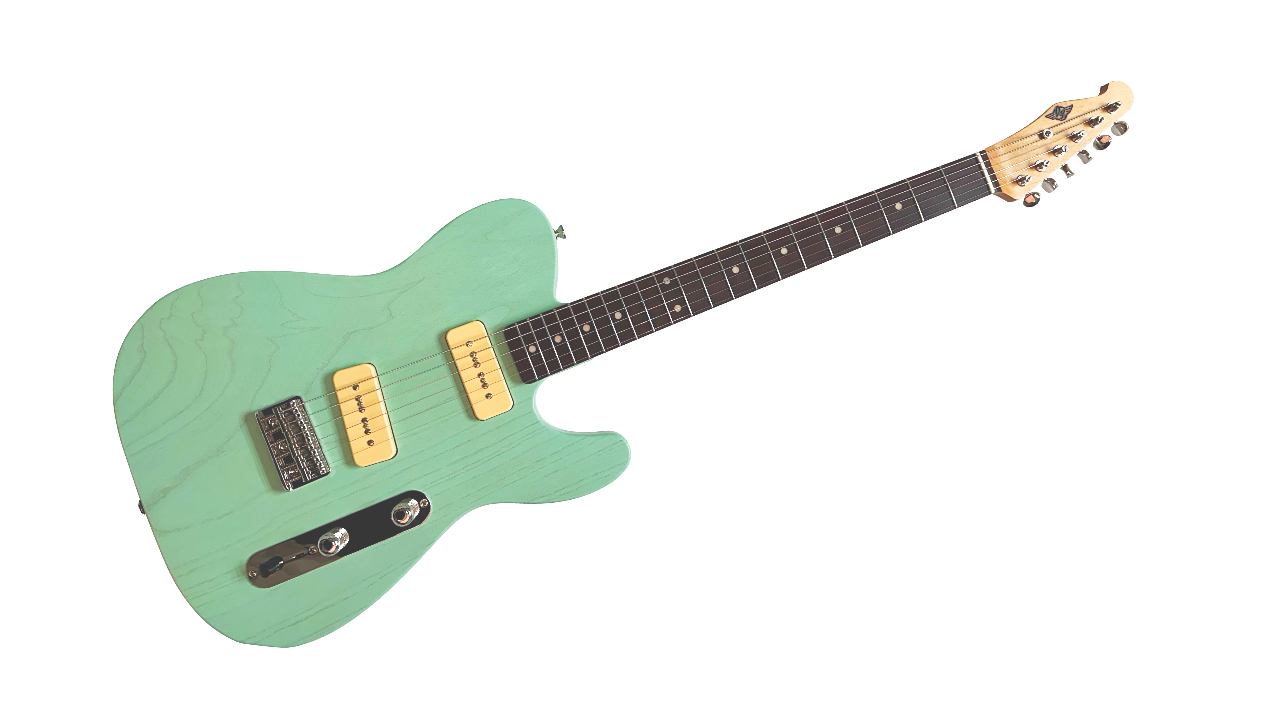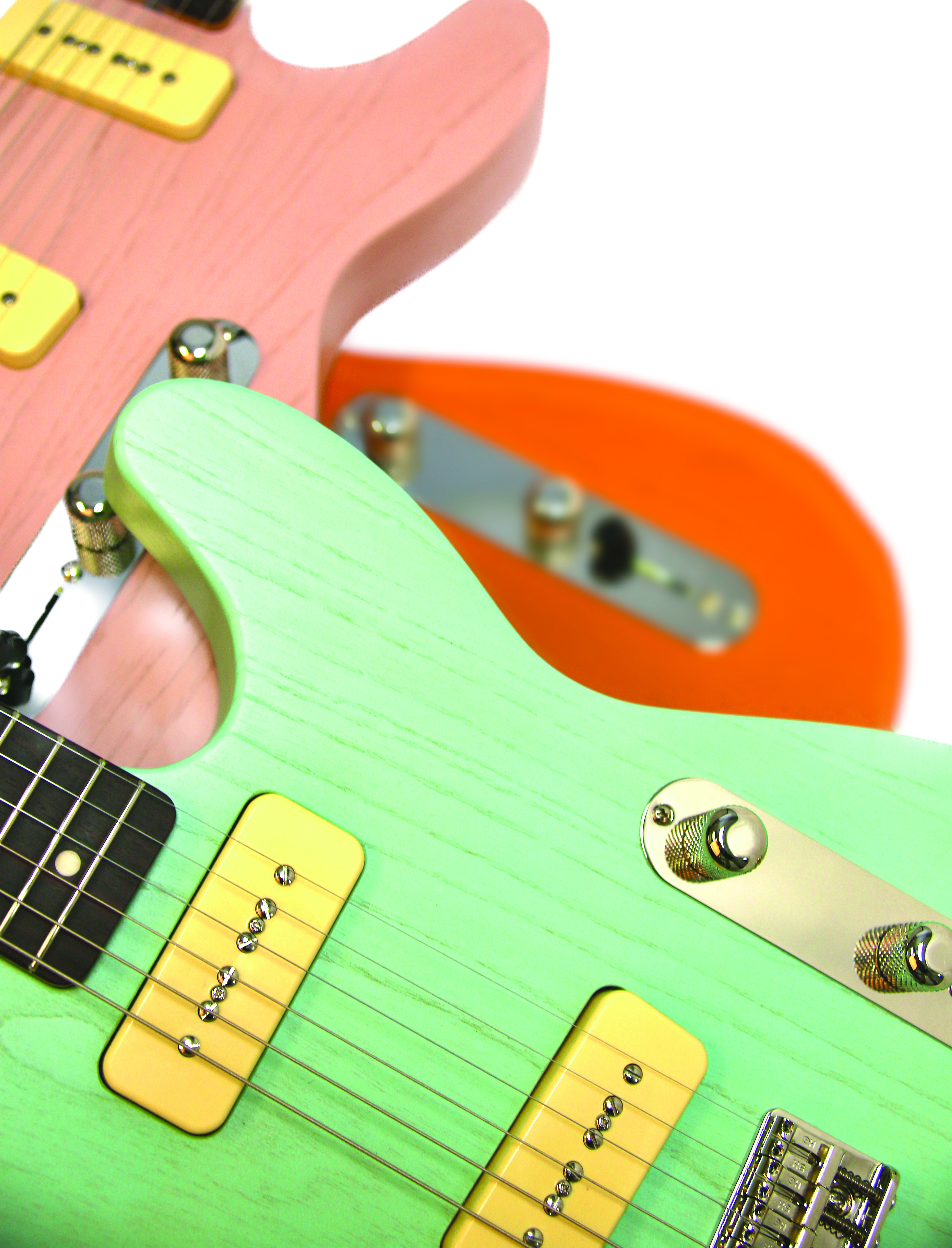GuitarPlayer Verdict
A clever, well-built take on the hot-rodded Tele, with a bundle of toothsome tones and its own muscular personality.
Pros
- +
Lightweight swamp ash body.
- +
Balanced response.
- +
P-90 pickups offer a fresh tonal take.
- +
Perfectly finished frets.
Cons
- -
High- and low-E strings are slightly misaligned with the pickups.
You can trust Guitar Player.
As the guitar world’s original rebel, the plank-bodied Telecaster has provided a prime foundation for hot-rodding ever since its introduction in 1950. RS Guitarworks taps into that aesthetic with its new Slab Lowboy, a stripped-down workhorse of a bolt-neck single-cut that’s appropriately named after the lowered ’32 Ford street rods and outfitted to slay in roadhouse and garage-rock settings.
Based in Winchester, Kentucky, RS Guitarworks started out in 1996 as a repair, restoration and refinishing operation, specializing in saving vintage guitars, but also offering services to players who wanted a custom touch on newer instruments.
In the years since, RS has developed a respected range of replacement parts, guitar kits and pickups, and has been building complete guitars on a production basis since 2005.
The Slab Lowboy is both the latest and most affordable addition to the lineup, and it promises not only a lot of performance in a gig-ready package but also impressive value for a guitar made entirely in the U.S.
While its foundation needs no introduction, the Slab Lowboy is quite different from the garden-variety Tele. RS makes its own bodies and necks, and the chassis displays the care that has been taken in this process.
The body is made from a two-piece swamp ash blank, although it’s darn near a one-piece body, with a single plank consuming about nine-tenths the width and another slice edge-glued to the lower bout near the bottom edge of the control plate.
Considering the dimensions of the main piece, it’s a nice chunk of timber, bringing the guitar in at a reasonable seven-and-a-half pounds at a time when light swamp ash is hard to find.
All the latest guitar news, interviews, lessons, reviews, deals and more, direct to your inbox!

The thin, satin nitrocellulose finish retains an open-pore look and feel that a lot of players are likely to appreciate on a tonewood like this, with its broad, prominent grain well suited to display.
My review sample was done in Surf Green, although a whopping 11 colors are offered, including the somewhat similar Foam Green, Daphne Blue, Fiesta Red, Shell Pink, Vintage White, Black, Burgundy Mist Pastel, Graffiti Yellow, Capri Orange and Dakota Red.
The neck is a traditional bolt-on, Tele-style affair, but it’s very well executed and presents a couple of twists, as well. The back is made from a nice piece of rock maple that reveals some subtle flame from certain angles, and it’s also finished in thin nitrocellulose for a smooth, played-in feel that is remarkably close to that of a couple of vintage Fenders that I have propped up within arm’s reach.
It’s topped with a slab of Indian rosewood fingerboard with 21 flawlessly dressed medium Jescar frets, a bone nut that’s a hair wider than the F-standard at 1.650 inches and vintage-style nickel Kluson Deluxe tuners. Carved to what RS calls the 63 C profile, the neck is smoothly rounded and extremely comfortable in the hand, and it plays great from the nut to the neck joint.
But perhaps its most immediately noticeable feature is a reverse six-in-line headstock for a touch of the Hendrix-flipped-Strat vibe, cut to RS’s own profile and adorned with a burned-in “winged RS” logo brand.
Hardware at the body end includes a hardtail bridge feeding through-body stringing over a set of six Highwood steel saddles, designed with recessed adjustment screws to eliminate the flesh gouging of trad saddles while also maximizing clarity and sustain. A pair of knurled Tele-style controls complete the look.

RS has been winding its own pickups for several years and has a range of in-house renditions of the classics to choose from.
The Slab Lowboy carries two Black Magic P-90s, their version of the classic Gibson single-coil, wound with 42 AWG enamel-coated wire and made with Alnico V magnets. The set reads 7.2k-ohms in the neck position and 8k-ohms in the bridge for what should be a nicely balanced response between them.
The bridge pickup is angled ever so slightly bass-side forward, reflecting the angled bridge pickup on original Teles. In addition to the use of a Gibson-width pickup beneath a Fender-width string spacing, this leads to a slight misalignment of the outer strings in particular, which run slightly wide of the P-90’s pole pieces, but we’ll see whether that’s a concern once the guitar’s plugged in.
They are wired through what many will recognize as the reverse Tele control complement, with the volume knob placed forward on the plate for easy volume swells, followed by a tone control and three-way switch. Beyond this, these components hide a few surprises.
For example, the volume potentiometer employed here is the SuperPot, made by CTS especially for RS, and features a custom taper and a heavy carbon resistance track. The switch and output jack are made by Switchcraft, and the latter is mounted in a sturdy Electrosocket jackplate.

Played unplugged, the Slab Lowboy has a lively, resonant voice with good sustain. Amped up through a 65amps London head and 2x12 cab, a tweed Deluxe-style 1x12 combo and a Fractal FM9 modeler into headphones, it presented an enjoyable blend of the classic and the hot rod it’s intended to be, delivering a fun ride in the process.
Although it’s kind of an off-the-menu combination per the classic archetypes, the inclusion of a P-90 in the neck position of a 25 ½–inch scale, maple bolt-neck, swamp ash–bodied guitar introduces colors we don’t normally hear from this pickup in its more familiar mahogany setting.
Arguably, the combination makes it a little more versatile, adding some snap and spank and low-end solidity to the brew while retaining enough midrange grunt to declare its presence. It makes for a throaty, expressive tone overall, with great playing dynamics when you regulate your pick attack.

The bridge pickup is designed for more warmth and richness relative to its usual response, while retaining the P-90 grind that fans of the breed will recognize, but a little less spikiness than you might expect from the treble position. It’s admirably clear, too, with the grunt and oomph of an 8k-ohm P-90 but little of the mud that some lesser types slather over your tone.
Unsurprisingly, both positions love a dollop of gain, and there’s rock and roll aplenty here with a JHS Angry Charlie or Silktone Overdrive+ applied to the input of either amp. When selected together, the pickups combine for a slightly scooped and chimey rendition of the Tele middle position, beloved to many players, but with a little more grit and muscle.
As for the misalignment between the E strings relative to the bridge pickup’s outer poles: there is perhaps a slight softening in their response, although you’re likely to notice it only when scrutinizing their sound and output, particularly through loud, clear amp settings. Once I started playing, I mostly forgot about it, and it didn’t dull my enjoyment of a guitar that offers a big bundle of personality in a simple, stripped-down package.
Specifications
- PRICE $1,495 direct
- NUT Bone, 1.650” wide
- NECK Hard rock maple
- FRETBOARD Indian rosewood, 25.5” scale, 10” radius
- FRETS 21 medium (Jescar 50085)
- TUNERS Kluson Deluxe
- BODY Solid swamp ash
- BRIDGE Hardtail bridge with Highwood steel saddles
- PICKUPS Two RS Black Magic P90s
- CONTROLS Master volume and tone and three-way switch on reversed Tele plate
- FACTORY STRINGS Ernie Ball Pure Nickel-Wound .010–.046
- WEIGHT 7.5 lbs
- BUILT USA
- CONTACT RS Guitarworks
Dave Hunter is a writer and consulting editor for Guitar Player magazine. His prolific output as author includes Fender 75 Years, The Guitar Amp Handbook, The British Amp Invasion, Ultimate Star Guitars, Guitar Effects Pedals, The Guitar Pickup Handbook, The Fender Telecaster and several other titles. Hunter is a former editor of The Guitar Magazine (UK), and a contributor to Vintage Guitar, Premier Guitar, The Connoisseur and other publications. A contributing essayist to the United States Library of Congress National Recording Preservation Board’s Permanent Archive, he lives in Kittery, ME, with his wife and their two children and fronts the bands A Different Engine and The Stereo Field.


